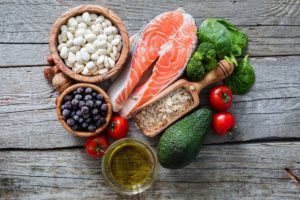
Most nutrition experts recommend ground over whole flaxseed because the ground form is easier to digest. Whole flaxseed may pass through your intestine undigested, which means you won’t get all the benefits.
Flaxseed’s health benefits come from the fact that it’s high in fiber and omega-3 fatty acids, as well as phytochemicals called lignans. One tablespoon (7 grams) of ground flaxseed contains 2 grams of polyunsaturated fatty acids (includes the omega 3s), 2 grams of dietary fiber and 37 calories.
Flaxseed is commonly used to improve digestive health or relieve constipation. Flaxseed may also help lower total blood cholesterol and low-density lipoprotein (LDL, or “bad”) cholesterol levels, which may help reduce the risk of heart disease.
You can buy flaxseed in bulk — whole or ground — at many grocery stores and health food stores. Whole seeds can be ground at home using a coffee grinder or food processor.
Tips for including flaxseed in your diet:
- Add a tablespoon of ground flaxseed to your hot or cold breakfast cereal.
- Add a teaspoon of ground flaxseed to mayonnaise or mustard when making a sandwich.
- Mix a tablespoon of ground flaxseed into an 8-ounce container of yogurt.
- Bake ground flaxseed into cookies, muffins, breads and other baked goods.
Like other sources of fiber, flaxseed should be taken with plenty of water or other fluids. Flaxseed shouldn’t be taken at the same time as oral medications. As always, talk with your doctor before trying any dietary supplements.
By Katherine Zeratsky, R.D., L.D.











